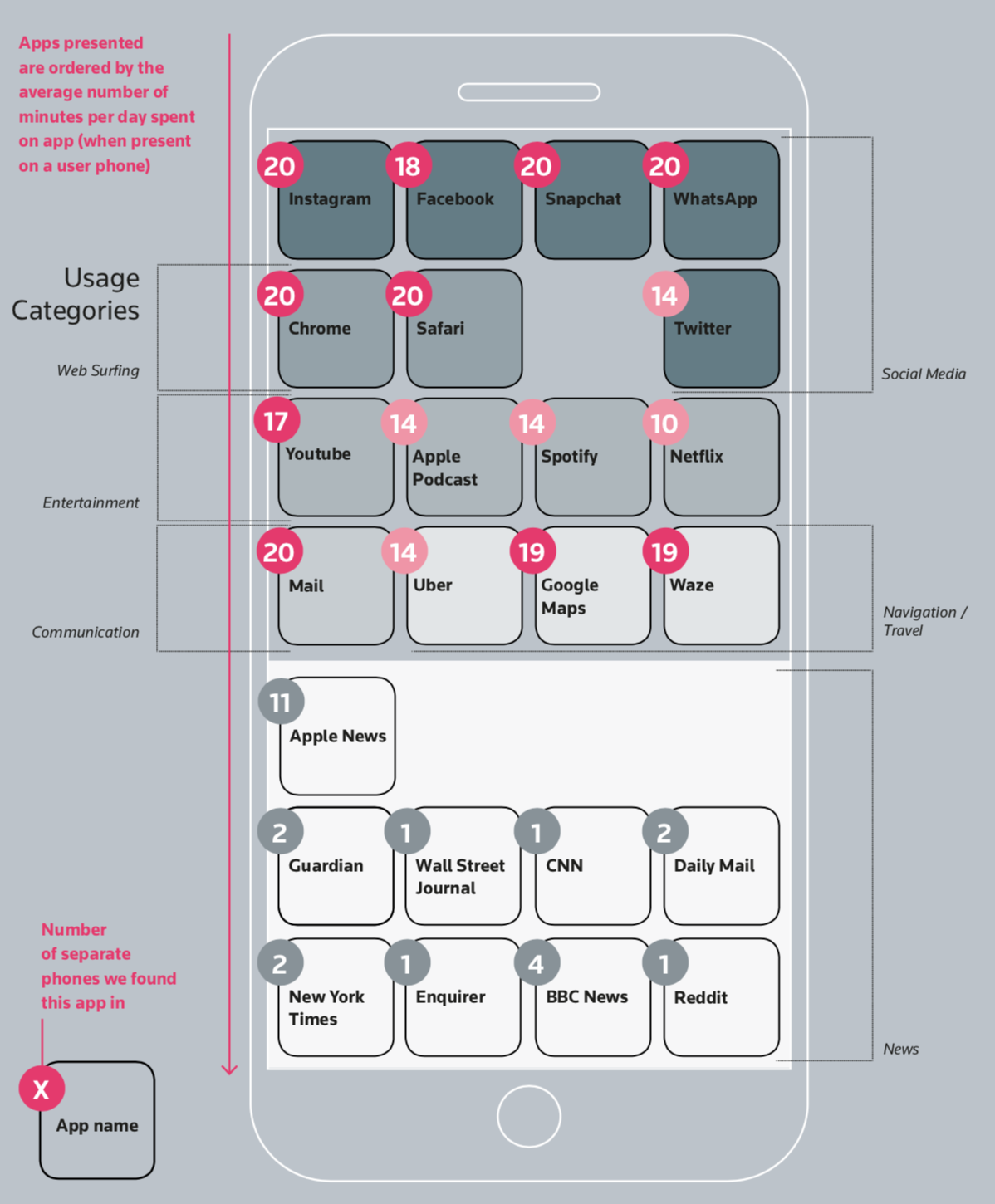
Want to see how under-35s are consuming news? You’ve got to get hold of their phones, and that’s exactly what researchers did for a report released this week by the Reuters Institute for the Study of Journalism.
The research was conducted by consulting firm Flamingo for Reuters; it’s intended to complement Reuters’ previously released qualitative study, the 2019 Digital News Report, which looked more broadly at the news habits of younger people. This time around, the research focused deeply on a small group: Flamingo worked with 20 people between the ages of 18 and 35, half in the U.S. and half in the UK: Tracking their smartphone behavior for two weeks, having them complete digital diaries about their offline news usage, and then following up with 90-minute in-home interviews and 60-minute “friendship trios,” which allowed for the exploration of the social side of news in a group setting.
On those 20 young people’s phones, Instagram was the primary app: Every one of the 20 had it and spent the most time on it daily. News apps, by comparison, received much less usage. Apple News is pre-installed on iPhones, which helps account for its relative prominence here — but “no news app (with the exception of Reddit) was within the top 25 apps used by respondents…For two of the four individuals who had the BBC news app on their phone during the two-week tracking period; the app represented less than 1 percent of usage time for both.”

Correction to the below tweet:
young audiences spend an average screentime of 3000 minutes a week on their phones https://t.co/tTbhC27zP3— Jacob Granger (@JPGJournalism) September 9, 2019
If news orgs want to get and keep new Gen Z users, they HAVE to get better tech. News apps and sites still aren't intuitive enough. Gen Z is used to Netflix. When was the last time that logged you out? Compare that to a news site. https://t.co/rHM47bdruq
— Elana Zak (@elanazak) September 3, 2019
The researchers identified four types of young news consumer:
— Heritage News Consumers “make a concerted effort to at least consume some of the same traditional news brands that they grew up seeing,” though they don’t always have time to consume news.
— Passive News Absorbers:
People in this group are just not interested enough to have any sort of regular relationship with news brands. Instead they remain informed through collective osmosis from their online and offline experiences, but dedicate little to no time to actively engaging with the news. When something piques their interest, they search for it directly and care less about the brand they choose. Due to a lack of proactive use of their feeds, they are the most at risk of falling into an echo-chamber cycle.
— Dedicated News Devotees have the highest engagement with news apps; they schedule time through the day to read news, and “have a routine, habitual appointment with their primary news brand.”
— Proactive News Consumers focus on curating their feeds and may “snack” across news brands rather than being devoted to any one brand in particular. “Their attitude is they are the curators.”
The researchers also identified four “key news moments” for younger audiences. Think of these as updated versions of the evening news: “While a classic news moment might be seen as setting time aside to read the paper or watch the 10 o’clock News, unsurprisingly the news moments for this audience are not as one-dimensional. They range from the more often direct and targeted to a news brand, to the more indirect and incidental.” They are:
— Dedicated: “This moment is about dedicating time to the news, as you might a novel or TV series.” It’s a more introspective and focused form of news consumption, but it also isn’t common. “I suppose my favorite way of consuming news is my weekend treat of buying the Guardian in print every now and then,” said Anna, a UK resident in the 21- to 24-year-old age range.
— Updated: Getting important news updates that you need, efficiently; think time-saving briefings and summaries. (Not to be confused with notifications, below.)
— Time-Filler: “Not about the news per se; something to do or to amuse, often while doing something else on a third party platform or in the real world.” This happens constantly throughout the day, but news providers are competing with other sources for attention.
— Intercepted: News provided via a notification, from an app, aggregator, or social media, interrupting whatever someone else was doing.
You can read the full report, which also includes some not-super-groundbreaking ideas for news organizations to try (make the news more empowering/inspiring, be mindful of platform but don’t try to sound too cool) here.
This story was updated on September 9 to include a corrected version of a tweet.